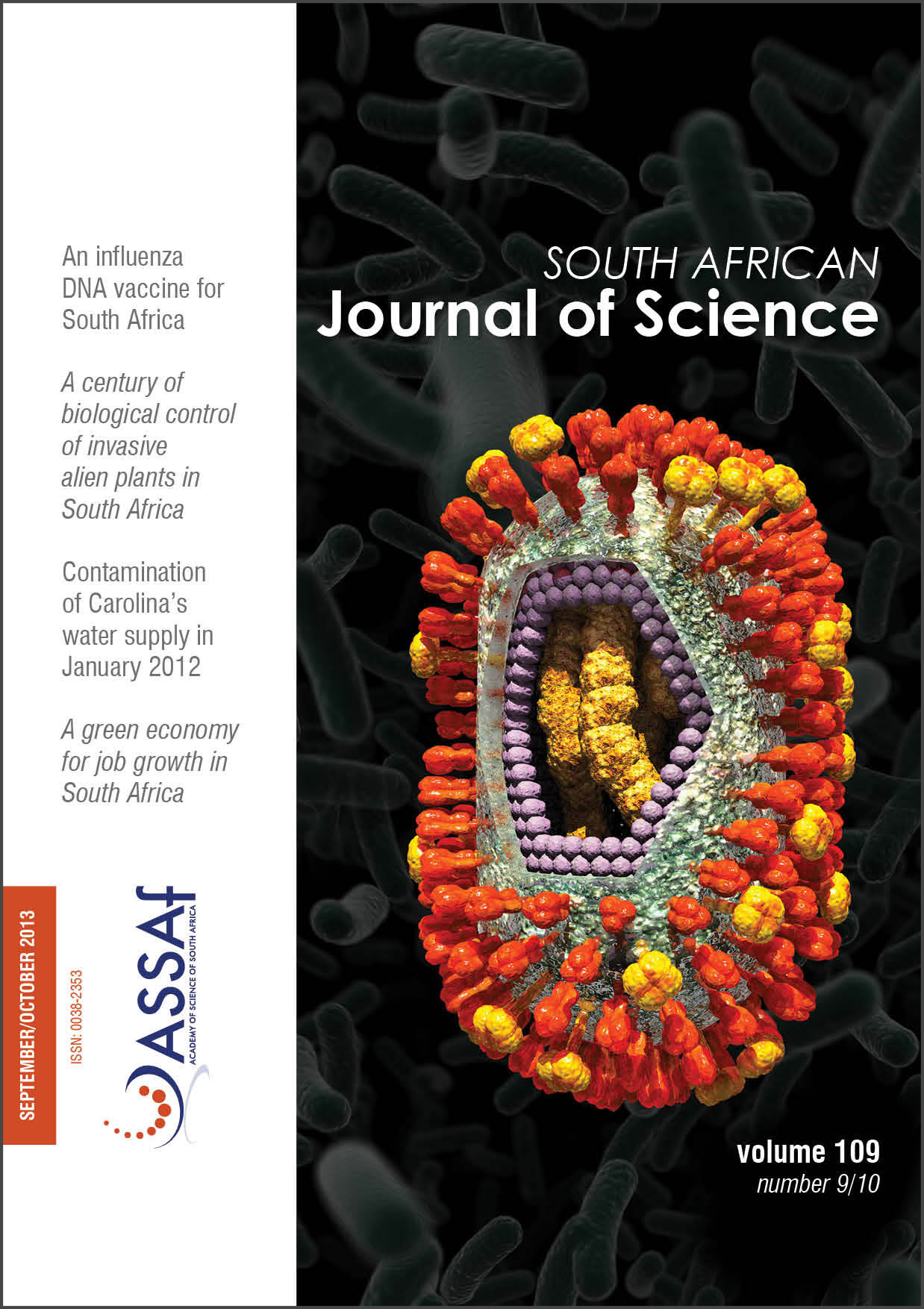Contamination of the water supply to the town of Carolina, Mpumalanga, January 2012
DOI:
https://doi.org/10.1590/sajs.2013/20120112Keywords:
acid mine drainage, water chemistry, coal mining, contamination, South AfricaAbstract
Acid mine drainage has become a serious environmental concern in South Africa, particularly for the long-term sustainability of the country’s fresh water supply. Such concerns were dramatically highlighted in January 2012 when water in the Boesmanspruit Dam, which supplies the town of Carolina with potable water, underwent rapid deterioration following a large rainstorm event. A sudden drop in pH to 3.7, accompanied by elevated levels of iron, aluminium, manganese and sulphate rendered the water toxic and unsuitable for use. The problem remained unresolved for 7 months, provoking community protests and eventually court action against the Department of Water Affairs. Although evidence pointed to coal mining as the source of contamination, it was unclear how the dam became polluted so rapidly. We investigated the events surrounding the contamination of Carolina’s water supply, in an attempt to identify a possible cause and to assess whether the event has relevance for other dams in the Vaal River system. Chemical analyses of water samples revealed that the pollution originated from the Witrandspruit subcatchment where seepage from coal mines had accumulated in a wetland upstream of the dam. During an unusually heavy downpour, ponds holding polluted run-off from coal handling facilities overtopped and flushed the contents of the wetland into the Boesmanspruit Dam. While a recurrence of the event at Carolina is possible, major dams in the upper Vaal River catchment are unlikely to experience a similar catastrophic event. In the long term, pollution of these dams is likely to proceed gradually, as is currently occurring at the Middelburg and Witbank Dams.
Published
Issue
Section
License

All articles are published under a Creative Commons Attribution 4.0 International Licence
Copyright is retained by the authors. Readers are welcome to reproduce, share and adapt the content without permission provided the source is attributed.
Disclaimer: The publisher and editors accept no responsibility for statements made by the authors
How to Cite
- Abstract 1406
- PDF 1471
- EPUB 174
- XML 289












.png)